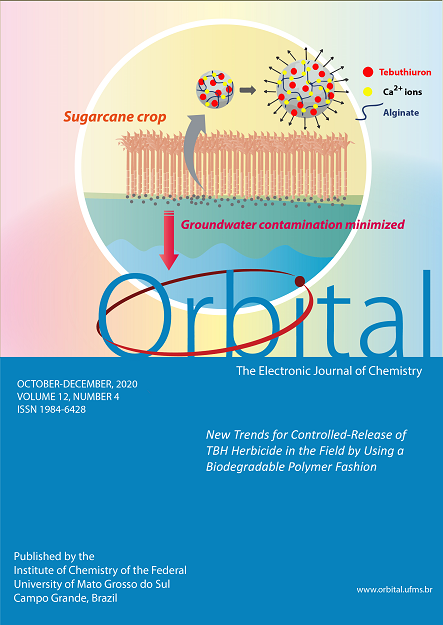- Applied Chemistry,
- graphene oxide,
- photocatalytic degradation,
- 2-chlorophenol,
- solar irradiation
Copyright (c) 2020 Orbital: The Electronic Journal of Chemistry

This work is licensed under a Creative Commons Attribution-NonCommercial-NoDerivatives 4.0 International License.
Abstract
Confiscation of organic pollutants from the environment is one the most important topics recently. The contamination of our water body that comes from several pollutants lead to several serious effects to the environment. The development of green and economical method in reducing the contamination is well discussed. The main aim of this research is to characterize and investigate the solar driven photocatalytic degradation of 2-chlorophenol (2-CP) from aqueous solution with the aid of polyaniline (PANI) incorporated graphene oxide (GO) composite (PANI/GO). PANI was incorporated with GO via in-situ oxidation polymerization method using ammonium persulfate (APS) as oxidizing agent to form composite. Three compositions of PANI/GO composites were synthesized with the ratio of PANI and GO of 1:1, 1:4 and 9:1. PANI, GO and PANI/GO composites were characterized comprehensively using Fourier transform infrared (FTIR), UV-visible (UV-VIS) and XRD spectroscopy analysis. Morphology was analyzed by capturing the images using Scanning electron microscope (SEM) with Energy Dispersive X-ray (EDX) analysis setup. The characterization studies revealed that, the PANI/GO composites have been successfully synthesized. Degradation of 2-CP was conducted using PANI/GO composites under solar irradiation for 3 hours. The degradation results disclosed that, PANI/GO composite with composition ratio of 1:1 possessed the highest degradation percentage with 75 % at degradation time of 150 minutes. Therefore, PANI/GO composites are one of the ideal catalysts in order to degrade 2-CP.

